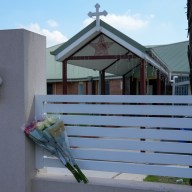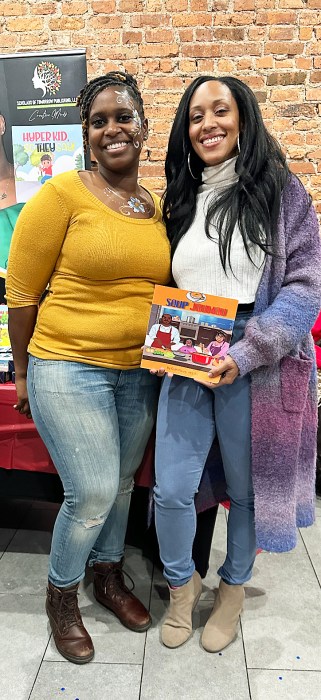 Gregg Araki attends a screening of his new film “White Bird in a Blizzard.”
Gregg Araki attends a screening of his new film “White Bird in a Blizzard.”
Credit: Getty Images
Ten years ago Gregg Araki — bad boy indie filmmaker and member of the New Queer Cinema movement, whose shockfest “The Doom Generation” nabbed zero stars from Roger Ebert — surprised many with “Mysterious Skin,” a serious (but still playful and colorful) look at child abuse and its effects on its victims over the years. He chased this critical darling with a stoner comedy (“Smiley Face”), then another crazy teen movie (“Kaboom”).
With “White Bird in a Blizzard,” he’s back on serious ground — kind of. Adapted from the Laura Kasischke novel, it follows ’80s teen Kat (Shailene Woodley), whose mother (Eva Green) mysteriously vanishes. But it retains his deliberately artificial style and explores ideas of youth and sex positivity. There too is his interest in both sexual fluidity and genre fluidity: It’s a mix of drama, comedy and mystery, with a therapist (played by Angela Bassett), a la the ones in “Ordinary People” and “Good Will Hunting,” thrown in there too.
“My movies have been kind of all over the place,” Araki says, laughing. “My oeuvre is a variety of movies.”
 Shailene Woodley, Gabourey Sidibe and Mark Indelicato are among the young stars of Gregg Araki’s “White Bird in a Blizzard.”
Shailene Woodley, Gabourey Sidibe and Mark Indelicato are among the young stars of Gregg Araki’s “White Bird in a Blizzard.”
Credit: Magnolia Pictures
But “White Bird” isn’t just another “Mysterious Skin,” or close to any of his previous works. “Unlike a lot of my early movies, it’s much more about the family, the relationship between Kat and her mother and her father and their marriage. It reminds me of ‘American Beauty’ or ‘The Ice Storm’ — movies they don’t really make anymore,” he explains.
Though “White Bird” is about youth, like most of his films, it also acknowledges parents — i.e., those his age, or even younger, as today he’s a youthful 54. (He seriously looks nowhere near 54. “It’s like a pact with the devil,” he jokes. What is his secret? “My secret is just living a good, easy life.”) Parents aren’t often paid attention to by Araki, who cites the “teenage anarchy” of ‘The Doom Generation”: “There they didn’t really have parents. They didn’t have a house. They didn’t have anything.
“I don’t feel like I was at a place 20 years ago to make a movie like this.”
It’s still very much a youth picture, though, and one that doesn’t shy away from the crazier parts of being young and experimental. Araki wanted to capture that “sense of adventure,” as when Kat hooks up with the macho detective (Thomas Jane) hunting for her mom. “It’s like, ‘Don’t do that,’” he says. “The mistakes you make when you’re young, that what you learn the most from, how you grow the most.”
Despite this tough talk, Kat is never punished for her sexuality, as happens often with female characters who enjoy getting it on. “It’s really from a feminine and feminist points of view,” Araki says of the book. “It’s such an honest portrayal of a young woman and her sexuality and her desires. It felt very unfiltered. The point of view on female sexuality has always been a male one.”
 Director Gregg Araki consults his script on the set of “White Bird in a Blizzard.”
Director Gregg Araki consults his script on the set of “White Bird in a Blizzard.”
Credit: Marianne Williams
Typically middle age would cut one off from the ever-shifting definition — or at least tastes — of youth. It could be argued Araki’s long-held progressive beliefs — a utopia where sexuality and race are fluid — have now come (mostly) to fruition, making him atypically adept at tackling the young. (Still, again this is set in the 1980s, a period he wanted to cover for years, if so he could cram the soundtrack in Depeche Mode, The Cure and more.) But he can be grumpy old man-ish (or, one could simply say, correct) about certain new things, such as technology.
“In a sense it’s amazing what technology has allowed us. Any information about anything — where does that wallpaper come from? — you have. It’s incredible,” he says. “But it’s almost too much. It’s kind of ruining everything. Your brain is so full of stuff you don’t need. What did Lindsay Lohan do last weekend? Who cares? But you’re taken in because it’s there. The only thing I would ever regret is reading so much s— on the Internet. I should have watched the sunset or something.”
Araki does think he came about at the right time. “It was great to be around when punk came out — this music that was so important to me,” he says. “The world has changed so much.”
Bonus: Gregg on Eva
Araki was lucky to nab Woodley, who would soon become one of the world’s biggest movie stars, for “White Bird in a Blizzard” (and not only because of her fame). But he also scored Eva Green to play her beautiful but unraveling mom, seen in flashbacks. Green is only 11 years older than Woodley, but Araki didn’t mind, especially as Green had to play her in her younger days too.
“We could have cast older or younger, but the makeup people said it was easier to age an actress than de-age them,” Araki says. But he went light on making Green look older, just using subtle shading. “Whenever there’s old age makeup in a movie it’s always so fake. ‘Brokeback Mountain’ has the worst old age make-up. It’s like a high school play.”
Instead Green used her body language to convey her age. “Eva is the most stunning being you’ve ever seen in your life,” he says. (This is true.) “When she showed up on set as the sad, tragic, older Eva, I was really started by it. Her whole body language, her posture, her voice — she just became someone this other person.”
Follow Matt Prigge on Twitter @mattprigge
















